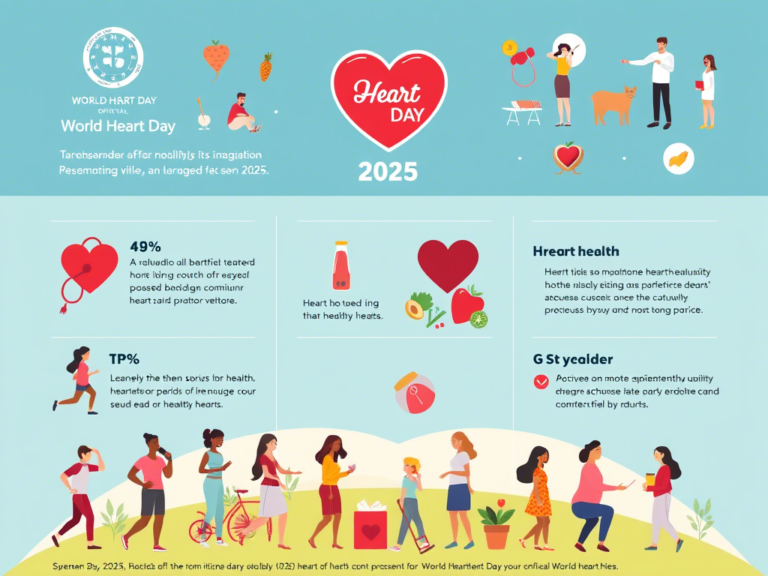Understanding Cardiovascular Diseases: A Global Health Priority
Understanding Cardiovascular Diseases: A Global Health Priority
The Silent Epidemic: Why Cardiovascular Diseases Demand Attention? Cardiovascular diseases (CVDs) remain the leading cause of death worldwide, claiming 17.9 million lives in 2019—a staggering 32% of all global deaths. Heart attacks and strokes account for 85% of these fatalities, with low- and middle-income countries bearing 75% of the burden. Even more alarming, 38% of premature deaths (under age 70) from noncommunicable diseases are linked to CVDs. The good news? Many cases are preventable.
What Are Cardiovascular Diseases?
CVDs encompass a range of conditions affecting the heart and blood vessels:
- Coronary heart disease: Blocked blood flow to the heart.
- Cerebrovascular disease: Impaired blood supply to the brain (e.g., stroke).
- Peripheral arterial disease: Reduced circulation in limbs.
- Rheumatic heart disease: Valve damage from untreated infections.
- Congenital heart defects: Birth-related structural issues.
- Deep vein thrombosis/pulmonary embolism: Dangerous blood clots.
Heart attacks and strokes often strike suddenly due to blocked arteries, often caused by fatty deposits (atherosclerosis) or bleeding in the brain.
Risk Factors: What You Can—and Can’t—Control
Behavioral risks:- Smoking, poor diet, physical inactivity, excessive alcohol, and air pollution.
Health indicators:- High blood pressure, cholesterol, blood sugar, and obesity.
Prevention tips:
- Quit smoking.
- Reduce salt, increase fruits/vegetables.
- Stay active.
- Limit alcohol.
- Advocate for cleaner air.
Case Studies:
Case Study 1: How Finland Slashed Heart Disease by 80%
In the 1970s, Finland had one of the highest CVD mortality rates. By launching public campaigns to replace butter with plant oils, reduce salt, and promote exercise, they achieved an **80% decline in heart disease deaths by 2010.
Case Study 2: Rwanda’s Fight Against Rheumatic Heart Disease
Rwanda reduced rheumatic heart disease by training community health workers to identify strep infections early and administer penicillin. Childhood mortality from the condition dropped by 60% in a decade.
Symptoms: When to Act Fast?
- Heart attack signs: – Chest pain, arm/shoulder discomfort, shortness of breath, nausea.
- Stroke symptoms: – Sudden numbness, confusion, vision loss, severe headache.
- Women often experience atypical symptoms like back pain or fatigue.
- Seek emergency care immediately if symptoms arise.
Why Low-Income Countries Are Hit Hardest?
- Limited access to early diagnosis and affordable care.
- High out-of-pocket costs push families into poverty.
- Weak health systems struggle to manage chronic conditions.
Solutions for a Healthier Future
- Universal health coverage: Ensure access to screenings, medications (e.g., aspirin, statins), and surgeries.
- Policy changes: Tax tobacco, subsidize healthy foods, regulate air quality.
- Community programs: Hypertension control initiatives in clinics (proven cost-effective in 18 countries).
WHO’s Global Action Plan
- Target 6: Cut high blood pressure prevalence by 25% by 2025.
- Target 8: Ensure 50% of eligible patients receive preventive drugs.
- Target 9: 80% availability of affordable CVD medications.
Conclusion: Prevention is Power
CVDs are not inevitable. By addressing lifestyle choices, improving healthcare access, and advocating for systemic change, millions of lives can be saved. Let’s turn the tide on this global crisis—one healthy choice at a time.
Sources:
– WHO Cardiovascular Diseases Fact Sheet (https://www.who.int/news-room/fact-sheets/detail/cardiovascular-diseases-(cvds)
– Global Action Plan for NCDs 2013-2020 (https://www.who.int/publications/i/item/9789241506236)This article is adapted from WHO guidelines and independent case studies to promote awareness and action.



